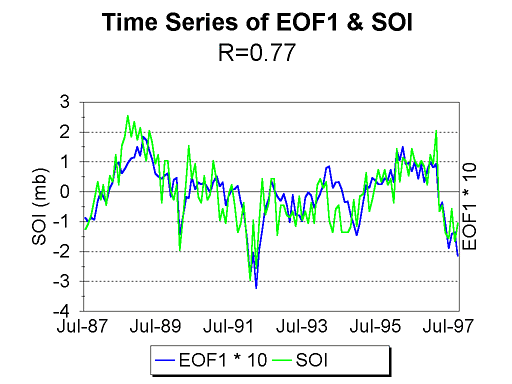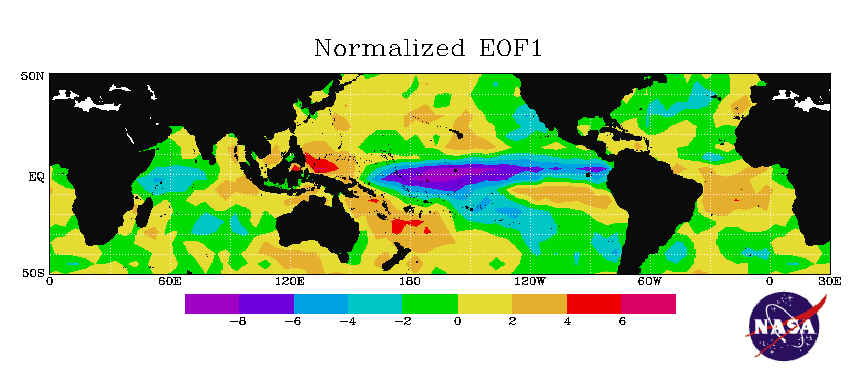|
Rainfall Variation Patterns Rainfall occurs in many spatial and temporal scales. Over much of the world, precipitation exhibits a preference for certain times of day. The amplitude and phase of the diurnal cycle has been studied by many investigators. An afternoon maximum is observed over most of the land areas; however, over the ocean, the time of the precipitation maximum is still debated due to a lack of data (Chang et al. 1995). The seasonal cycle of precipitation is dominated by the large rain features such as the monsoons, the Inter-Tropical Convergence Zone (ITCZ), the South Pacific Convergence Zone (SPCZ), typhoons and hurricanes. Average oceanic precipitation distributions for each season are shown for comparisons. The El Nino/Southern Oscillation (ENSO) is a coupled global air-sea interaction process that dominates interannual variations. The term "Southern Oscillation," coined some seventy years ago (Walker, 1924), refers to "the tendency of pressure at stations in the Pacific, and of rainfall in India and Java to increase, while pressure in the Indian ocean decreases". The El Nino phenomenon refers to the rise in sea surface temperature (SST) off the equatorial South American coast. Analyses of historical data indicate that the ENSO phenomenon occurs on the average every 3-6 years.
An Empirical Orthogonal Function (EOF) analysis of the rainfall time series shows that the first normalized EOF correlated with Southern Oscillation Index (SOI), which is the pressure difference between Darwin and Tahiti. Patterns of the first normalized EOF shows the prominent ENSO features.
|
|
Last Update: September 14, 2015
|
|||||
| Research Scientist: Dr. Si Gao, AOES/GMU | |||||
| Please send questions and comments to: Prof. Long S. Chiu |




